Parrot Zik 2.0 review: still the world's most advanced headphones
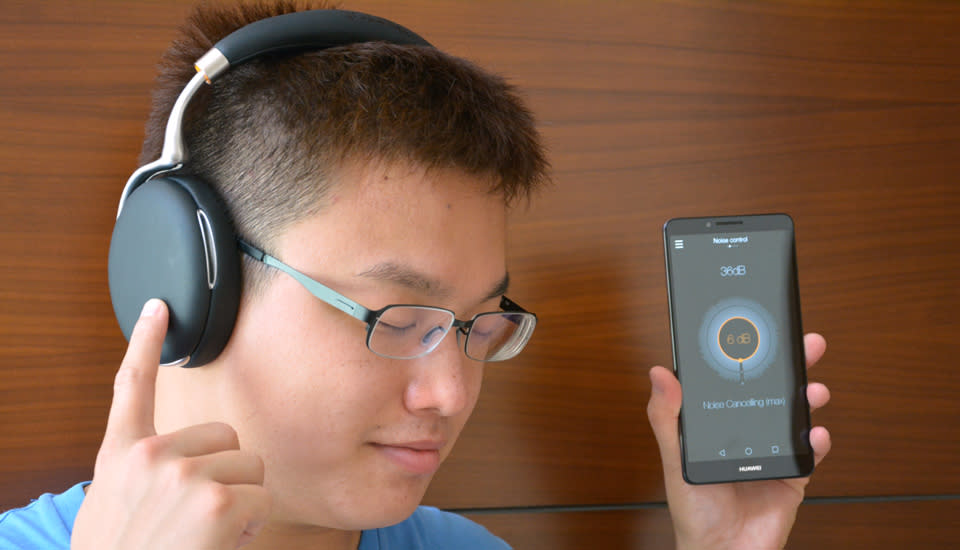
If you're into drones and wireless audio, then you'll probably agree that Parrot is the best thing out of France since Daft Punk. Personally, I've been most impressed with the company's wireless headphones, the Zik. In fact, I've been a regular user since it came out about two years ago. Even today, no other brands have attempted anything as advanced as these cans. Which makes sense: These are no ordinary Bluetooth headphones. In addition to being wireless, they feature effective noise cancellation and intuitive touchpad input, all tucked inside a quirky Philippe Starck design, no less. More importantly, the audio quality has gotten better over time as Parrot improved device compatibility via firmware updates.
But of course, there's always room for improvement; the original Zik is on the heavy side, and not everyone's a fan of its bulky look. Well, that's pretty much why we now have the Zik 2.0, and fortunately, it offers more than just improved portability. Read on to see if this new model is worth the $399 upgrade.
Hardware
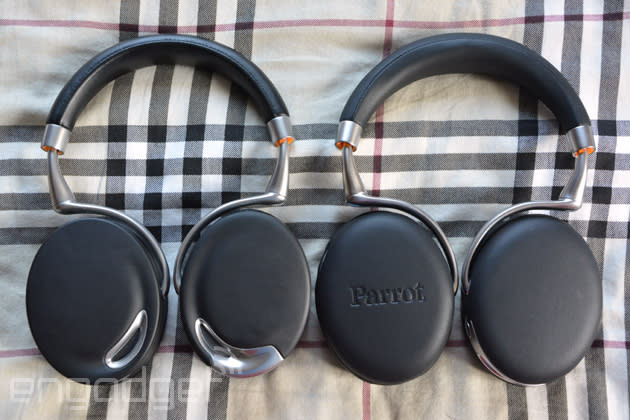
The Zik 2.0 is essentially a lighter, more rounded and thus better-looking version of the first-gen Zik; and don't forget that it also comes in white, blue, mocha, orange and yellow. Our pre-production unit weighs 274 grams (it's officially 270 grams), a 17 percent reduction from the 327-gram original (325 grams officially). The difference was immediately noticeable when I first put on the new model. It feels more comfortable and secure thanks to the extra padding on the head rail, as well as the more spacious memory foam cushions. I can now lean backward or forward without the fear of gravity pulling off my headphones. Another notable change is that the oval cups are now covered with soft, faux-leather material instead of hard plastic, which adds some warmth to both the look and feel.
The general feature set and layout remain unchanged. Both cups are pivoted on the signature bone-shaped, extendable aluminum arms, and they each house a 40mm neodymium driver with a frequency response range between 20Hz and 22kHz -- a bit lacking on treble which is a common limitation on noise-cancelling headphones. The left cup contains the removable 830mAh battery and the NFC coil, whereas the right cup carries the fully disguised touchpad, two bone-conduction microphones, a larger power button (with LED indicator), micro-USB port (for charging and updating firmware) and 3.5mm line-in socket (you can use that with the bundled 1.3m audio cable). I'm not exactly sure where it is, but there's also a "presence sensor" somewhere inside the right ear cushion that automatically pauses your music when you take the Zik off, which is a thoughtful feature.
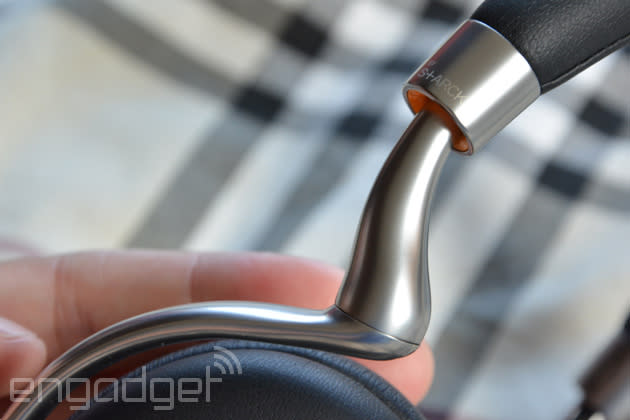
What's new is that there are now six noise-canceling microphones split between the cans instead of four, thus allowing the new Zik to reduce up to 30 dB of ambient noise instead of just 25 dB (more on that later). It's also worth mentioning that the removable cover on the left cup -- with a large "Parrot" logo embossed -- has a more secure fit thanks to an extra magnet plus its new shape. So far, I haven't accidentally brushed it off, something that I often did with my first-gen Zik.
Just like the original, the Zik 2.0 is easy to set up. You can either tap your NFC-enabled Android phone on the left cup for automatic Bluetooth pairing, or search for the headphones from your device's Bluetooth menu. Unlike some other Bluetooth audio hardware, the Zik doesn't require you to put it into pairing mode. In fact, it doesn't have one. What's more, even if you've already paired it with another device, the Zik is always discoverable on boot, so you can pair it with a new device provided the previous is disconnected or powered off.
As for the swipe gestures, it's again more of the same: Slide from back to front to skip a song, or the other way round to go back; slide up or down to adjust the volume; tap to play or pause, and the same for answering or ending phone calls; tap twice to reject an incoming call; and long-press to toggle your phone's voice assistant, be it Siri or Google Now.
My only niggle here is that the touchpad is less sensitive than before: If I swipe with the same amount of force I'm used to from the past two years, the new Zik either misses my gesture or mistakes it for a tap, which became annoying after a short while. So I now have to swipe slower and with a little more force applied. Maybe that new faux-leather wrap is getting in the way; or maybe it's an intentional modification, as my original Zik is also susceptible to accidental swipes due to its greater sensitivity. Still, I'd prefer to swipe with less effort if given the choice.
Software
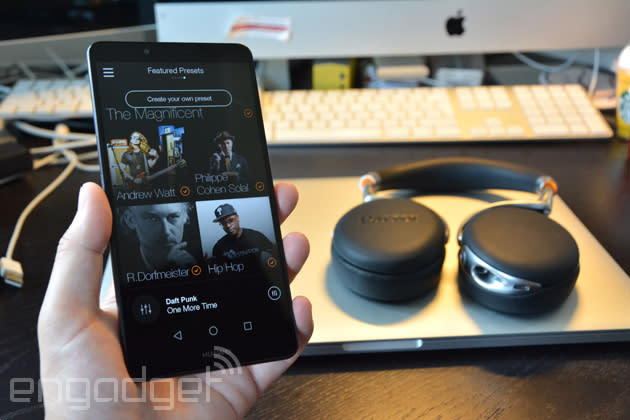
The Zik 2.0 will work just fine out of the box, but in order to make the most of it, you'll need to install the free namesake companion app (not to be confused with Parrot Audio Suite) on your Android or iOS device (Windows Phone support coming soon). After all, the software is really where the money is: This is where you can toggle and tweak the headphones' noise cancellation, concert hall effects (which I tend not to use), equalizer and audio presets. And for the record, yes, the Zik stores all your settings.
Upon launch, the app detects whether your mobile device is connected to a Zik 2.0, after which it'll take you to a page showing how much battery is left, which features are active and what song you're listening to. Swiping horizontally takes you to the pages dedicated to the aforementioned features, and the Settings menu lets you toggle the presence sensor, auto power-off timer, Bluetooth auto connect, caller ID text-to-speech service and firmware update.
There are a couple of interesting improvements here. For instance, you can now adjust the level of noise reduction -- from "Street mode," for safety's sake, all the way up to 30 dB. Compared to my first-gen Zik (which already aced the noise-cancellation feature on the Sennheiser and Bose headphones from the same generation), that extra 5 dB makes a noticeable difference, and I look forward to taking advantage of this on my next flight.
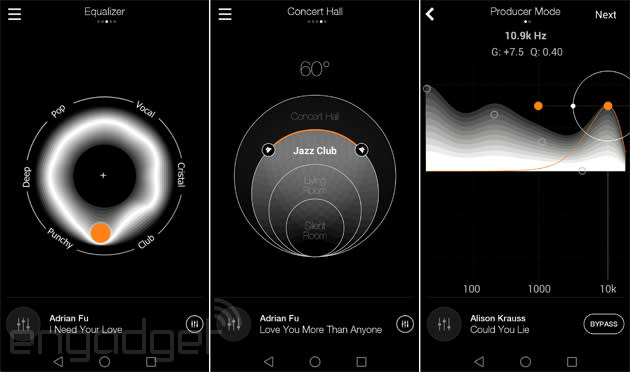
Another handy addition is the new simplified equalizer. Rather than fiddling with frequency settings in a chart, you can just slide a pointer across "Pop," "Vocal," "Cristal," "Club," "Punchy" and "Deep" within a circular heat map to suit your taste. Personally, I found my sweet spot to be somewhere on the outer edge between "Punchy" and "Club."
For those who prefer a higher level of customization, you can still use the classic line chart equalizer (along with the concert hall effect tool) to create your own audio preset. Alternatively, you can also download some presets from artists featured by Parrot within the app (selections include DJ Jazzy Jeff, Andrew Watt, Philippe Cohen-Solal, Richard Dorfmeister and, yes, Conchita Wurst). At some point in the near future, you'll be able to share your presets with others as well.
Zik 2.0 also has a smart new feature called Smart Audio Tuning, which can automatically apply audio presets to music that matches certain criteria, be it by artist, album, song or genre. So hold this thought for a second: What Parrot's offering is a platform that lets artists personally tune your headphones to best suit their own songs or albums. Regardless of traction, there's no arguing that this is a pretty neat idea, so hopefully Parrot can throw in more big names to get the momentum going.
General use and sound quality
With the exception of the touchpad's sensitivity issue I mentioned earlier, I'm otherwise very pleased with the Zik 2.0. First of all, the 830mAh battery still manages about six to seven hours of continuous playback if you have Bluetooth, noise reduction and concert hall mode enabled. Alternatively, you can get up to a staggering 18 hours with the new flight mode (no Bluetooth, no concert hall effect; just a wired connection with noise cancellation). Alas, it takes 2.5 hours to recharge the depleted battery, and to make matters worse, Parrot still doesn't offer a dedicated charger for those who carry a spare battery.
Luckily, the great audio quality almost makes up for it, but that's not without my own equalizer settings: I prefer just a little more punch and treble on top of the default profile. Having said that, compared to its predecessor, the Zik 2.0 definitely has more resolution in the treble space and is less muddy overall. Given the limitation in the frequency response, the new Zik is still ever so slightly muffled in the high frequencies than, say, my KEF M200 in-ears that I use regularly, though it's barely discernible when you're out and about. It should also be noted that you can use the Zik sans battery, aka in passive line-in mode, but the audio quality is nowhere as good without the digital signal processor and noise reduction running.
Many have asked Parrot to add aptX for potentially better streaming quality, but sadly, that still hasn't happened. In fact, when I spoke to Parrot CEO Henri Seydoux two years ago, he insisted that aptX isn't needed to achieve good streaming quality. With aptX becoming the norm these days (and more so once Qualcomm's acquired its maker, CSR), maybe he'll reconsider? I'll take whatever to retrieve the missing treble bits.
Last but not least: call quality. The Zik 2.0 actually supports HD Voice which, as you can guess, enables much clearer voice calls, though you do need to have a phone and a carrier that support the standard as well. Alas, I have neither, so call performance is about the same as what we got with the original Zik: My voice is often staticky, especially in noisy environments, and sometimes too quiet on the other end. I tend to just grab my phone out to pick up calls to save the embarrassment, which is a bit ridiculous given how much these headphones cost.
Wrap-up
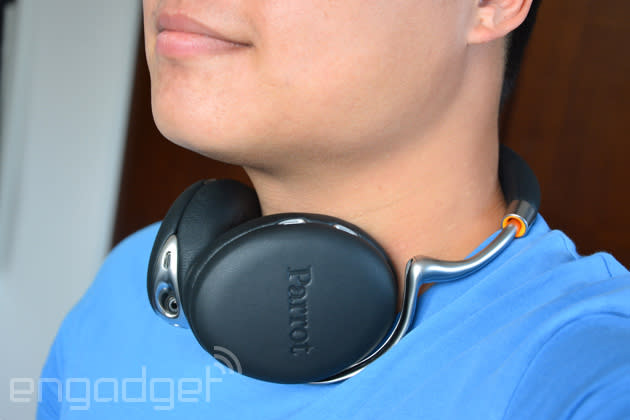
Parrot is so close to making the perfect Bluetooth headphones. Well, they pretty much are if you ignore the voice-calling feature and just use them for music. Put it this way: The original Zik remained the most advanced Bluetooth headphones for two years straight, and now we have a new version that's better-looking, more comfortable to wear and even better at noise cancellation, to the point where it's arguably best in class. As a bonus, the cans come with more tuning options to entertain obsessed audiophiles on the road. They also offer artists a new way of interacting with their fans by letting them share their very own audio presets, which can also be set to target specific songs and albums. This social element might be perceived as a gimmick, but even so, you gotta admire Parrot for thinking out of the box.












































